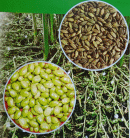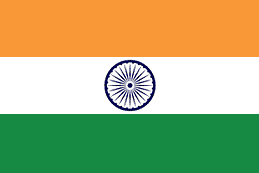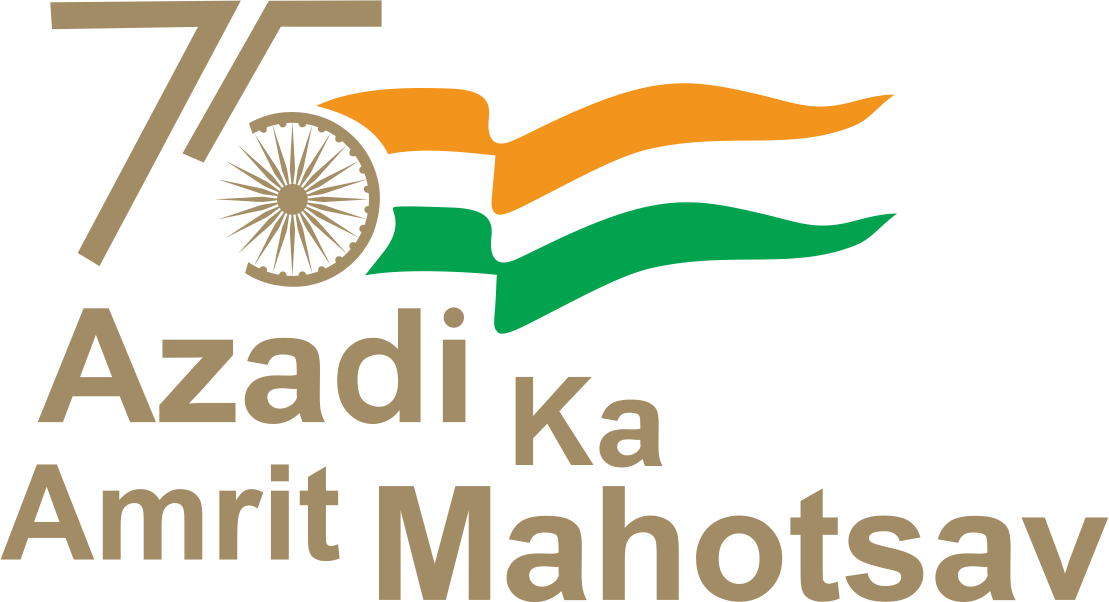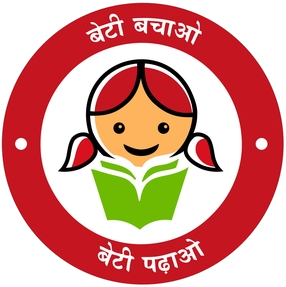RESEARCH HIGHLIGHTS
SMALL CARDAMOM
CROP IMPROVEMENT & BIOTECHNOLOGY
Inventorisation and collection of small cardamom germplasm were undertaken periodically in the forests of Western Ghats and plantations in the cardamom tract of South India since 1979. Conserved a total of 804 small cardamom accessions and 22 accessions of allied genera in the National Conservatory of Cardamom Germplasm at Myladumpara & Sakleshpur centres. Evaluation trials were carried out to identify genetic variants of cardamom from various habitats for exploitation in crop improvement programmes.
Released eight high yielding cardamom selections/hybrids suitable for different cardamom growing zones through State/ Central Variety release committees viz.,
- ICRI-l, ICRI-2, ICRI-5, ICRI-6, ICRI-7 (for Kerala Zone)
- ICRI-3 & ICRI-8 (for Karnataka Zone)
- ICRI-4 (for Tamil Nadu Zone).
ICRI has developed a new promising cardamom variety (accession no. 594) with desirable biotic and abiotic characters, through natural selection, genetic upgradation and evaluation during 2021-22. This clone is registered with NBPGR, New Delhi as a unique variety with a yield potential of 3,000 kg /ha under moderate management.
Studied the breeding behaviour and pollen biology of cardamom.
Prepared a floristic calendar of the cardamom tract.
Conserved different herbal spices like Sage, Salvia, Mint, Marjoram, Rosemary, Horse radish, Oregano, Basil, Celery etc. in the nursery.

ICRI-5

New promising cardamom variety (Accession no. 594)


Released varieties of small cardamom


Cardamom hybrids developed at RRS Saklespur
A full-fledged Biotechnology Lab of the institute has undertaken research on genetic diversity of cardamoms, molecular diagnostics of diseases of cardamoms & black pepper. Carried out gender specific markers in nutmeg and identified genes related to disease resistance. Passport Data sheets including Molecular Marker Data were prepared for small and large cardamom accessions under germplasm characterization programme. A variety specific molecular marker was generated for small cardamom malabar cultivar. Characterization of Fusarium affecting cardamom was undertaken. Putative genes related to fungal and viral disease tolerance in small and large cardamom respectively were explored through transcriptome analyses. Transcriptomes of large cardamom chirke virus disease and those of small cardamom capsule rot disease were generated for the first time and studied for genes related to resistance/tolerance. DNA fingerprinting studies of Indian cardamom and Guatemalan cardamom was carried out as part of identifying and discriminating cardamom of different geographic origins in market samples.
Micropropagation systems were developed for Small cardamom, Large cardamom, Vanilla, Black pepper, Ginger, Turmeric, Tree spices viz-Clove, Garcinia, Tamarind, Curry leaf and Herbal spices viz. Oregano, Mint, Sage, Thyme and technologies were scaled up for large scale production and protocols were transferred on a MoU to Biotech firms for further utilization. Short- & Long-Term Training on TC techniques was extended to 110 youth from BPL families on collaboration with ‘Kudumbashree’ a Govt. of Kerala project on poverty alleviation and empowerment of rural women.
Protocol for Interspecific hybridization was standardized using embryo rescue methods for different vanilla species.
The elite small cardamom clone (MCC 549) developed by the division is notified as a unique variety by ICAR-NBPGR, New Delhi and assigned IC No.645601 for National Identity.
The two cardamom hybrids developed by ICRI Myladumpara are notified by ICAR-NBPGR and assigned IC numbers MHC-1 and MHC-2 as IC645599 and IC645600 respectively. These were evaluated for consecutive four years and initiated action for submitting the variety release proposal to Kerala State Varietal Release Committee for plantation crops.
Molecular characterizations and profiling of total 50 accessions of small cardamom including released varieties as well as landraces was carried out. Passport data sheets of all the accessions are under compilation.
Molecular characterization of Fusarium isolates from small cardamom - Gene sequencing of fifteen Fusarium isolates were carried out using selective primers.
Developed new LCCV (Large Cardamom Chirke Virus) – specific primer for chirke virus indexing.
AGRONOMY & SOIL SCIENCE DIVISION
Package of practices covering various agro techniques such as nursery preparation, planting methods, nutrient management and judicious irrigation schedules were developed and transferred to the planters.
An economic schedule of soil cum foliar application of fertilizers for cardamom has been formulated which results in 33% saving in fertilizer costs as compared to soil application. Developed remedial measure for zinc and Boron deficiency.
Soil Analysis & Fertilizer recommendations are being carried out regularly. The institute has analyzed more than 1,00,000 cardamom soil samples received from planters of Kerala, Tamil Nadu and Karnataka and most judicious and balanced recommendations were given.
ICRI had carried out the fertility mapping of 52 Panchayaths and one Municipality of Idukki district under the multi-institutional project on “Soil Based Plant Nutrient Management Plan for Agro Ecosystem of Kerala”. The study highlighted acidification of soil, very high phosphorus content of soil (> 25 kg ha-1), deficiency of secondary nutrients like calcium and sulphur and micronutrient boron.
Characterised the cardamom capsules from Cardamom Hill Reserve (CHR) of Idukki district in Kerala with respect to oil content, its volatile components, oleoresin and physical quality parameters like litre weight, size of the capsule, seed husk ratio etc.
Integrated Nutrient Management of cardamom cultivation was developed.
In order to improve the fertiliser use efficiency, a schedule for drenching of fertilisers in the plant base was standardised.
Eco-friendly farm practices, organic production systems and GAP for cardamoms were systematized.
Farm Mechanization programmes for cardamom cultivation were undertaken. Evaluated various mechanical devices such as weeder, washing machine, pitmaker as well as cardamom driers viz. Biomass gasifier model of cardamom drier and other improved cardamom driers for carrying out various farm operations in cardamom plantations.
Monitoring of pesticide residues at farm gate level in cardamom ecosystem is being undertaken. Weather data is recorded every day, compiled and studied for crop weather interactions and provided to various stake holders.
Foliar application of ‘ICRI cardamom special’, a nutrient formulation; resulted in significant improvement in the yield of cardamom.
A Mobile application (CardS App) for site specific fertiliser recommendation was developed as an output of the collaborative project (with ICRI Spices Board, Rubber Board and Digital University of Kerala) entitled ‘Integrating GIS based soil fertility assessment of cardamom tract and app-based fertilizer recommendation for climate resilient cardamom cultivation’.
Compiled and published the trends in climate variability and cropping system changes in various spices of Kerala state.
CROP PROTECTION DIVISION
Plant Protection Code (PPC) for small & large cardamom was prepared and published. Survey on diseases of small and large cardamom was carried out in order to ascertain incidence and severity of major diseases for formulation of Integrated Diseases Management strategies. The model for prediction of capsule rot disease in small cardamom in Kerala using weather data and disease incidence was undertaken with the help of CYMMACS, Bangalore. Disease escapes of small & large cardamoms collected from different zones were screened and evaluated for tolerance studies in hot spot areas. Trials on blight disease escape lines of large cardamom are progressing in Sikkim. Small cardamom accessions were screened for Katte virus disease tolerance. Studied and identified the major viral diseases chirke & foorkey of large cardamom, and disease transmission, survival and management strategies were worked out. New diseases reported were analysed using molecular markers such as on small cardamom ‘Phyllody’ or abnormal tiller from regions of Idukki district. Local strains of Bioagents were evaluated in the field for the management of rot pathogens in cardamom. Soil application of dolomite and its combinations were found to reduce the population of soil borne fungal pathogens in cardamom.
- The study was conducted on the effect of ozone (200mg/h) for removal of pesticide residue from fresh cardamom. Results showed ozone could remove pesticides from 35-87%.
- The pesticides such as Copper oxychloride, Fosetyl Aluminium and Diafenthiuron (registered under CIB &RC) were found compatible with fertilizers like urea, DAP and MOP in tank mixes.
- Fungicides were evaluated for the management of rot diseases in small cardamom. It was observed that highest reduction of capsule rot and rhizome rot were noticed in the plot treated with as Dimethomorph 50WP (0.2%), Fosetyl-Al 80WP (0.2%) and COC 50WP (0.2%) + B.M. (1.0%).
- Identified and characterised causal organisms of capsule rot, rhizome rots and nursery rots
- Developed Integrated Disease Management (IDM) strategies
- Identified tolerant lines of Phytophthora from germplasm accessions
- Recommended the biocontrol agent Trichoderma sp. for controlling capsule rot, rhizome and seedling rot diseases
- Produced Bioagents viz, Trichoderma & Pseudomonas and supplied to farmers
- Mass multiplication protocol was developed for VAM which was found effective in improving growth and vigour and in protecting cardamom seedlings from soil borne pathogens.
- Developed management strategies for fusarium diseases of small cardamom.
- Identified pathogens of vanilla and herbal spices, control methods developed.
- Initiated studies on mathematical modelling for prediction of capsule rot disease outbreak
- Studied Climate change impact on disease occurrence in cardamom.
- The treatment Fluopicolide 4.44 % + Fosetyl-Al 66.67 % WG (Profiler) @ 2500 g/ha was found most effective followed by Fluopicolide 4.44 % + Fosetyl-Al 66.67 % WG (Profiler) @ 2250 g/ha in controlling rhizome rot and azhukal disease (capsule rot) of small cardamom in comparison to existing recommended fungicide Fosetyl Al 80 % WP @ 3000 g/ha.
- Four fungicides were evaluated in a field trial for the control of rhizome rot in small cardamom. The maximum reduction in disease incidence was noted in Fenamidone + Mancozeb followed by Tebuconazole.
- Four fungicides were evaluated in a field trial for the control of leaf blight in small cardamom. The maximum reduction in disease incidence was noted in Tebuconazole followed by Hexaconazole and Carbendazim+Mancozeb.
Bioagent Production


- Recommended effective insecticides at minimum concentration to planters.
- Brought down the number of insecticide applications to 5-7 per year from 12-14 sprays/year, thus reducing the quantity of pesticides and the application cost.
- The technology of pruning of dried cardamom leaves (cultural control) during February, and application of five sprays of insecticides/year on the lower one third portion of cardamom plants have proved effective and economical for thrips control, as was demonstrated in planters’ fields.
- Pesticide spray schedule for Kerala, Karnataka and Tamil Nadu cardamom plantations was formulated for effective management of major and minor pests in small cardamom.
- IPM consisting of mechanical control of beetles and chemical control of grubs have been worked out for cardamom root grub management and has been demonstrated in planters’ fields.
- An effective management strategy for whitefly was also evolved (with behavioural control - trapping adult fly with yellow sticky trap and also spraying of neem oil suspension at 0.5% on the lower surface of leaves for control of nymphs) and being recommended.
- New insecticide molecules were evaluated for the management of major insect pests in small cardamom.
- Evaluated new insecticide molecule, Hunk (Acephate-95% SG) in different agroclimatic zones and sent report for label expansion for use in small cardamom against major insect pests
- Evaluated EPN infected Galleria cadavers on soil pests of small cardamom, among them EPN @ 4 Lakhs ijs recorded cent percent damage on root grub and 40-45% on root knot nematode (RKN).
- The final report has been submitted to Central Insecticide Board and registration committee, CIB&RC of the external funded research project on “Evaluation of Rallis insecticide, Hunk (Acephate 95% SG) on major insect pests viz. thrips and borer in small cardamom” through M/s Rallis India Limited for label expansion of Acephate 95% SG in small cardamom.
- Field evaluation of bio-efficacy of newer molecules viz., Spinetoram, Spirotetramat, Flupyradifurone, Afidopyropen and Chlorantranilipriole revealed that different doses of Spinetoram was effective against thrips and shoot, capsule and panicle borer pest of small cardamom.


EPN cadavers & application to cardamom
RESEARCH HIGHLIGHTS- LARGE CARDAMOM
A) CROP IMPROVEMENT DIVISION
- Released two high yielding varieties: ICRI Sikkim 1 & ICRI Sikkim 2 by selection (yield potential 800 kg / ha) from Sawney cultivar.
- Survey was carried out for the collection of large cardamom germplasm/accessions and wild Amomum at different areas of Sikkim, Kalimpong and Darjeeling districts of West Bengal; Aalo, Siang, East Siang, West Siang districts of Arunachal Pradesh and Mon district of Nagaland.
- Germplasm conservatory established and maintained at ICRI, Research farm at Pangthang (1990 m MSL) and Kabi (1620 m MSL) farm based on high yielding, disease and pest tolerant, biotic and abiotic stress tolerant lines since 1986.
- Crossing work was carried out between the selected lines to develop hybrid with desired characters. Selection process of large cardamom accessions is going on for specific traits like location specificity, abiotic stress tolerant.
- High yielding genotypes like SCC 106 (1257 kg/ha), SCC 89 (1064 kg/ha), SCC 89 (1065 kg/ha), SCC 88 (1016 kg/ha) and SCC 72 (660 kg/ha) selected from the PET were clonally multiplied.
- Laid out two new trials of large cardamom (Bomdila West Kameng district of Arunachal Pradesh and Lower PR Hills Kohima in Nagaland) for studying the performance of Dzongu Golsey and Varlangey cultivars in these locations under AICRP on Spices.
B) AGRONOMY AND SOIL SCIENCE DIVISION
- Economic life span of Sawney cultivar of large cardamom was fifteen years after planting by adopting improved agro techniques at Sikkim condition.
- Fertility status of large cardamom from soils has been evaluated.
- Foliar application of Borax @ 0.5 % with Soil application of Borax @ 2.5 kg /ha recorded the highest dry yield of 561.0 kg/ha with benefit cost ratio 2.49:1compare to control.
- In-situ soil moisture conservation practices, surface mulching recorded significantly higher soil moisture content, however trench across the slope + Biomass in trench recorded the highest dry yield of 317.94 kg/ha with highest benefit: cost ratio of 2.89:1 compared to control.
- Combined application of Zn, Mn and Mg @ 0.5gm lit-1 recorded the maximum values of growth parameters and highest dry yield (651.12 kg ha-1) of large cardamom as compare to other treatments.
- Application of Zn, Mn and Mg @10 kg ha-1 observed the highest dry yield (574.10 kg ha-1) of large cardamom as compare to control.
C) PATHOLOGY DIVISION
- Identified Chirke [Large cardamom chirke virus (LCCV)] and Foorkey [Cardamom bushy dwarf virus (CBDV) ] as major viral diseases causing enormous loss to the crop. Disease transmission mode, survival and management were worked out.
- A survey on diseases of large cardamom was carried out in different locations of Sikkim, Kalimpong and Darjeeling districts of West Bengal and Arunachal Pradesh in order to ascertain incidence and severity of major diseases and also formulated Integrated Diseases Management.
- The blight pathogen Colletotrichum gloeosporioides was isolated from the diseased samples such as pseudo stem rot, leaf blight, infected spikes and capsules collected from various locations and the disease cycle was constructed.
- Among the various cultivars Varlangey registered maximum blight disease incidence (15%) followed by ICRI Sikkim-2 (10.5%), Sawney (7.5%), Dzongu Golsey (7.0%) and ICRI Sikkim-1(6.5%). Minimum disease infection was recorded for cultivar Seremna (4.0 %) in the field.
- Treating suckers with carbendazim + mancozeb (0.3%) or copper oxychloride (0.3%) showed significantly less incidence of blight (6.2 & 4.1% respectively which were on par) as compared to control (14.6%). While in organic cultivation, treating the sucker with bio-agents (Pseudomonas fluorescens + Bacilus subtilis , 5% each) was the most promising one.
- In organic cultivation practices, prophylactic spraying and drenching with 3-4 lit solution of Pseudomonas fluorescens @ 5 % during April last week or May 1st week and again in August & September found effective in reducing the blight disease.
- Two other two fungal diseases, leaf streak and Phoma leaf spot were identified and their management approach also suggested.
- Native bio control agents were identified, mass multiplied and supplied to farmers based on the demand for disease management under organic system of cultivation in Sikkim and Darjeeling district of West Bengal.
- Native bio control agents were identified, mass multiplied and supplied to farmers based on the demand for disease management under organic system of cultivation in Sikkim and Darjeeling district of West Bengal.
D) ENTOMOLOGY DIVISION
- The occurrence of pests and natural enemies were recorded through surveillance. The Integrated Pest management (IPM) schedule for large cardamom was formulated for management of leaf caterpillar (Artona chorista Jordon), shoot fly (Merochlorops dimorphus Cherian), stem borer (Glyphipterix sp.) and white grub (Holotichia Spp.).
- Soil samples of large cardamom plantations from different altitude of Sikkim, Darjeeling and Kalimpong districts of West Bengal collected and analysis revealed presence of six different nematodes viz., Helicotylecchus spp., Hoplolaimus sp., Tylenchorhynchus annulatus, Pratylenchus sp., Meloidogyne incognita andCriconematids with varying level of nematode count.
- Work related to identifying the capsule borer of large cardamom was initiated and capsule samples from different altitudes of large cardamom growing areas of Sikkim and Darjeeling & Kalimpong districts of West Bengal elevations and found that incidence ranges from 0.8 to 3.5 % and in old plantations incidence were more compared to new plantations.
- Pollinators of the large cardamom were enlisted and their frequency of visit was studied in different altitudes. The main pollinators recorded are bumble bees (Bombus haemorrhoidalis Smith) and (Bumbus breviceps Smith). Information on role of pollinators towards optimum capsule and seed setting was generated.
- Study on the efficacy of neem kernel aqueous extract (NKAE) in management of white grub in large cardamom with NKAE and other bioagents Beauveria bassiana and Metarrhizium anisopliae it was found that that M. anisopliae 10.0 g/lit of water gave the highest control (79.10 %) followed by NKAE 5% + 1.0 % surfactant (73.0 %) and B. bassiana @ 10.0 g/ lit of water (69.6%).
- Three new insect’s viz. Melolontha sp. nr. furcicauda Ancey (Scarabidae : Melolonthinae), Anomala dimidiate ( Hope ) ( Scarabidae : Rutelinae ), Bhahmina sp (Scarabidae : Melolonthinae ) were reported from large cardamom ecosystem.
- Himalayan palm civet (Paguma larvata C.E.H. Smith), Prcupine (Erethizon dorsatum), Indian wild boar, Musk deer ( Sus scrofaL), Rodent and Monkey are reported as mammalian pest causing damage to cardamom plants, spike and capsule.
E) POST HARVEST TECHNOLOGY DIVISION
- Scientifically improved large cardamom bhatti system was developed by the ICRI, RRS Tadong has been popularized by Spices Board (Dev) in Gangtok and Guwahati Region covering entire large cardamom growing tracts in India through subsidized schemes.
- The study was carried out for standardizing sieve size for capsule gradation. Established linkage with manufacturer of sieves for gradating large cardamom capsules as per the specifications for supplying to SHGs.
- Capsule gradation of large cardamom were carried out and standardized five grades based on size of the capsule.
TECHNOLOGY RELEASED
Biofortified coffee pulp compost prepared by mixing with Trichoderma, Pseudomonas and rock phosphate (5 kg each of the three in one ton of raw coffee pulp and composted for three months) may be applied at the rate of 2 kg / plant in two splits a year for cardamom under Karnataka conditions. (Manoj Oommen, Harsha K N & Noolvi I R)
Cardamom can be cured in Heat pump assisted dehydrator (HPAD) dryer at a temperature of 500C for 5 hours and then gradually increasing by 2-50C up to 750C and holding for half an hour. The total time required is 24 hours. (John Jo Varghese & Manoj Oommen)
Spraying of Fluopicolide 4.44% + Fosetyl-Al 66.67% WG (Profiler) @ 2500 g/ha or @ 2250 g/ha in recommended to control rhizome rot & capsule rot. (Awaiting approval of CIB & RC) (K Dhanapal, K A Saju & Harsha K N)
Acephate 95% SG @ 1000 g / ha can be used for the effective control of capsule damage due to thrips and shoot, panicle & capsule damage by borer. (P Thiyagarajan, M A Ansar Ali, K Dhanapal and A B Rema Shree)
LARGE CARDAMOM
Crop improvement
- Two unique germplasm collected from Darjeeling District of West Bengal and planted in isolation under observation.
- Hybridized seedlings (F1) morpho-metric characterization under progress. New set of hybridization work carried out and seed obtained were sown in seed bed for germination.
- Comparative study on growth behavior of germplasm under study of “Screening of drought tolerant lines” in irrigated and after withholding of water for certain period as well as Stomatal index was carried out.
Agronomy
- “Production potential of large cardamom under diverse organic management practices”. Treatment imposed as per schedule and plant morphometric data were recorded.
Entomology
- Bioassay study of Artona chorista caterpillars revealed that the caterpillar dispersed more( 56.25%) in Leaf Treatment Methods compared to Topical Application Methods ( 25.00 % ) when used ash with water @ 1:4 (w/v) and spray @10 times dilution in laboratory conditions.
- Capsule borer egg incubation period, larval-pupal development time and adult survivorship were recorded in laboratory condition, result revealed that development time of each life stages were significantly affected by temperature and relative humidity. One entomo-pathogenic fungus found naturally affecting capsule borer larvae and pupa, which was isolated and identification &bio-assay study under progress.
Entomology
- Bioassay study of Artona chorista caterpillars revealed that the caterpillar dispersed more( 56.25%) in Leaf Treatment Methods compared to Topical Application Methods ( 25.00 % ) when used ash with water @ 1:4 (w/v) and spray @10 times dilution in laboratory conditions.
- Capsule borer egg incubation period, larval-pupal development time and adult survivorship were recorded in laboratory condition, result revealed that development time of each life stages were significantly affected by temperature and relative humidity. One entomo-pathogenic fungus found naturally affecting capsule borer larvae and pupa, which was isolated and identification &bio-assay study under progress.
Pathology
- Surveys revealed that blight, leaf streak, leaf rust and dry rot was prevalent throughout the year. The incidence of blight, leaf streak and leaf rust were high during April to September whereas wilt/dry rot incidence was high during October to June.
- White Furled Leaf disorder was proved to be due to nutrient deficiency, Application of agricultural lime in the soil (@100g /plant) followed by the foliar application of micronutrient formulation (50 g in 10 Litres of Water), two rounds at fortnightly intervals can rectify the problem.
- The application of paraffinic oil (0.5 % or 1.0%) in combination with bioagents (1.5%) provided significant reduction in controlling foliar blight incidence and was on par with Bordeaux mixture application (1.0%). It also provided significant protection next to Bordeaux mixture in controlling rust disease.
- Biopriming with microbial inoculants (Azotobacter + PSB + K mobiliser) significantly improved seed germination and seedling growth of large cardamom.
- Among various organic substrates tested for Trichoderma, naximum population was obtained in large cardamom spike followed by paddy straw, large cardamom pseudostem and mixed leaves.
- Soil application of cashew shell (1.0 %) was comparable with Bioagents (2. 0%) in reducing the soil borne diseases and also in improving the overall plant growth under nursery conditions.
- MoU had been done with the HDRI, Govt of Uttarakhand for collaborative work in the field of Research and development of large cardamom in Uttarakhand.
- A Co-ordinated Varietal Trial (CVT) on large cardamom with the promising genotypes was initiated based on the decision of XXXIII Annual General Meeting (AGM) of AICRPS.

Large cardamom capsules cured using ICRI Improved Bhatti







